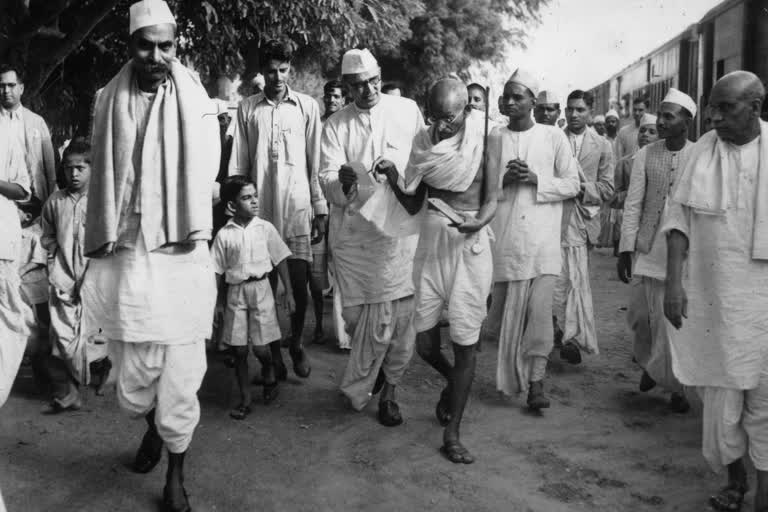Champaran (Bihar): Though Mahatma Gandhi has had heartfelt connections with various places he visited during the course of his lifetime, Bihar's Champaran stands out, as it was here that the first Civil Disobedience Movement took place.
The movement in Champaran held immense significance, as it openly challenged the British rule in India, and eventually led to the transformation of Mohandas Karamchand Gandhi to the Mahatma.
Champaran was home to farmers who were being harassed by the British and forced to cultivate indigo. It was then that Raj Kumar Shukla convinced Gandhiji to visit Champaran.
On April 22, 1917, Gandhi arrived at the Bettiah railway station from Lucknow. He organised a gathering at Bettiah Hazarimal Dharmashala, where he listened to the woes of the farmers.
Bapu then decided to use 'Satya' and 'Ahimsa' as weapons against the cruelty of the British.
On April 24, Gandhi reached Bairiya's Laukariya village. He met the British manager Gill in Bairiya and spent a night there. Following this, he reached Narkatiaganj on April 27. Upon reaching the station, he moved to Raj Kumar Shukla's village Murlibharwa with his supporters. Here, the British had mercilessly destroyed the property belonging to Shukla
Champaran's Bhitiharwa Ashram played a very crucial role in the Champaran movement. It was on April 27 that Gandhiji reached Bhitiharwa village upon Shukla's request.
Mahatma Gandhi had himself built the Bhitiharwa ashrama, on land donated by Baba Ram Narayan Das. On November 16, Gandhi built a school and a hut here.
The hut still stands on the same spot in its original form. However, an additional shed has been built above the hut to protect it.
The hut still houses the millstone used by Kasturba Gandhi to grind wheat, along with the table that Gandhiji used. It is said that Bapu used the table to read and write, but sometimes also slept on it.
The hut, which was built in 1917, still attracts scores of tourists from faraway places.
The other prominent locations which were visited by Gandhiji during his time in Champaran, are Satwaria in Chanpatia, Kudia Kothi and Sathi.
Also read: Gandhi's Buxar chapter eventually transformed him into the Mahatma



